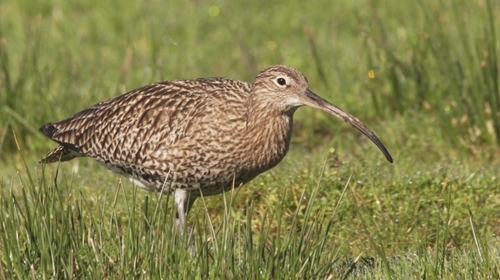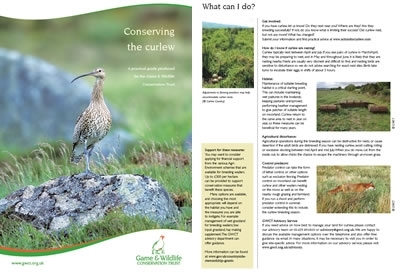By Amanda Perkins, Curlew Country Project Manager
As we draw ever closer to leaving the European Union and reinventing our environmental schemes, much has been said about the intricate details of how much support farmers receive, where it comes from and what it rewards. Paperwork, prescription and perfect timing.
For farmers and wildlife, life doesn’t work that way. In farming, as in conservation, no two years are the same. This year the long and harsh winter weather caused many farmers to run out of fodder crops and they were forced to buy in replacements at high prices which has led to inevitable loss of income. Now, farmers are reporting that their grass crops are beginning to wither from lack of moisture. Last year crop condition was lost when crops were not cut in the fine weather in July. Following the period of rain that followed, I know of farmers that lost crops altogether. The dry weather this year will limit grass growth, so all needs to be done to maximise the benefits from an agricultural crop.
What impact does this have on curlew?

In short, a great deal. We suspect from our nest monitoring and the unexpected changes in pairs and territories that curlew will have been lost in the hard conditions. In the fine dry weather curlews will struggle to find wet ground in which the adults can probe long bills and where the invertebrate life is rich for chicks. Travelling further distances potentially with less cover will make them more vulnerable to predation.
Traditional hay meadows would have contained species that thrived on a comparatively nutrient impoverished soil. Meadow flowers and grasses would not have reached cutting stage until much later in the year – late July or August and only one crop would have been harvested. The flower and grass species in a traditional meadow would have supported a similar wide range of invertebrates upon which ground-nesting chicks rely.
This is just one factor. Farming activity can have a huge impact on curlew survival. Mowing, rolling and cutting can not only destroy vital curlew habitat, it can also destroy nests.
Thankfully, most farmers care about their curlew. They will not harm a curlew nest if they know where it is. Farmers are very keen on ground-nesting birds and want to see them return to a viable population, but it is not always that simple.
The local agri-environment scheme cutting date would not save most local curlew. Last year, farmers wanting to cut grass in early July when it was ready lost money by delaying and then not having fine weather for harvesting again until late August. If the schemes had worked and were simple to construct for nesting waders, and curlew in particular, we would have plenty in the lowlands still.
Furthermore, this ignores one crucial factor – not all farmers are in an agri-environment scheme. Last year, one of the Curlew Country chicks that fledged foraged with its family over an area of about 60 acres (24 ha). Saving that curlew family cost £3,000 when they were located to a fraction of that area and the mowing was stopped.
A flexible, common sense approach to conservation
An agri-environment scheme compensating farmers for loss of income in this case would involve three farmers and there would have been no predicting which three farmers that might be before the nesting season. It will be challenging to provide a basic level of support at landscape scale, butt it is not impossible.
If we are to reward farmers for their hard work in supporting breeding curlew, the solution will be detailed and complicated, but that should not deter policymakers.
Survival of lowland curlew is dependent upon farmers and land managers. Fortunately, the majority of them are as keen as anyone else on a workable plan for wader recovery. We need to stop alienating farmers and blaming them for meeting our insatiable demand for cheap food.
How would we feel if we arrived at work and were told that the rather rare and precious creature that needed to be saved had taken up residence locally and would mean a cut in our salary? Or that it would necessitate a complete re-design of our annual workplan for now and years to come? Positive partnerships between land managers, conservationists and communities and a pragmatic approach will be the methodology for achieving the common goal of keeping a viable curlew population in lowland UK. It is only then that we can truly achieve long-term recovery.
Conserving the curlew - get your free 8-page guide

What's inside your FREE guide
✓ Introduction - a species in decline
✓ Pressures on breeding
✓ High levels of nest and chick predation
✓ Agricultural nest destruction
✓ Breeding curlew facts
✓ What can I do?
✓ Summary & key points
Download now >